Humankind’s technological advances have grown hand in hand with our food. Each new leap…agriculture, domestication of animals, steam power, electricity, refrigeration, microwaves…has changed not just how we eat but what we eat. What is called food today by many across the world would be confusing to people 500 years ago and unrecognizable to those from 10,000 years ago. Even the foods of the so-called paleo diet would draw blank stares from most cavemen. Technology has made food easy…but what happens if technology fails? It’s a well-known engineering principle that the more complex a system is, the more fragile it is. History has shown it’s not an “if” but a “when.” So when the new Dark Age arrives, what will happen to our current techno-food? Dining in the apocalypse will follow new rules…or more precisely, old rules using very, very old foods.
Rule 1. Food is where you find it.
Eating after TEOTWAWKI (The End Of The World As We Know It) means loco-vorism at its most extreme. Shipments of foods across continents and seas or even from 50 miles away are no more. If it’s not growing within walking distance, it’s not on the menu.
So let’s talk about where you should walk. There’s a common misconception that you have to go into the deep woods to find wild foods. This couldn’t be further from the truth (or from food!). The deep woods are a static environment with little change in light, humidity, and wind from day to day. This results in a low diversity of plants. Where does one find a highly dynamic environment with great plant diversity? Borders are the key…where woods meet field, where water meets woods, where a burned-out city block meets intact buildings. At borders the amount of sunlight, wind, water, and wildlife are constantly in flux, and as conditions change they pass through optimal growth conditions for many different plants.
A note of caution: an edible plant can become poisonous if the environment in which it grows is toxic. Wild plants excel at drawing up nutrients from the soil, but if there are heavy metals or toxic chemicals, these too will be brought up into the plant. The more history you know of the land you’re foraging, the safer you’ll be.
Some of your best plants will be found in places torn up by humans. Nature hates wounded soil and will quickly fill it with plants to protect and heal the damage. It should be noted that in Mother Nature’s eyes, a mono-culture grass lawn is a horrible wound and she’ll constantly try to diversify it with “weeds”…much to the delight of herbicide manufacturers. But after the apocalypse the use of weedkiller will end and the result will be food!
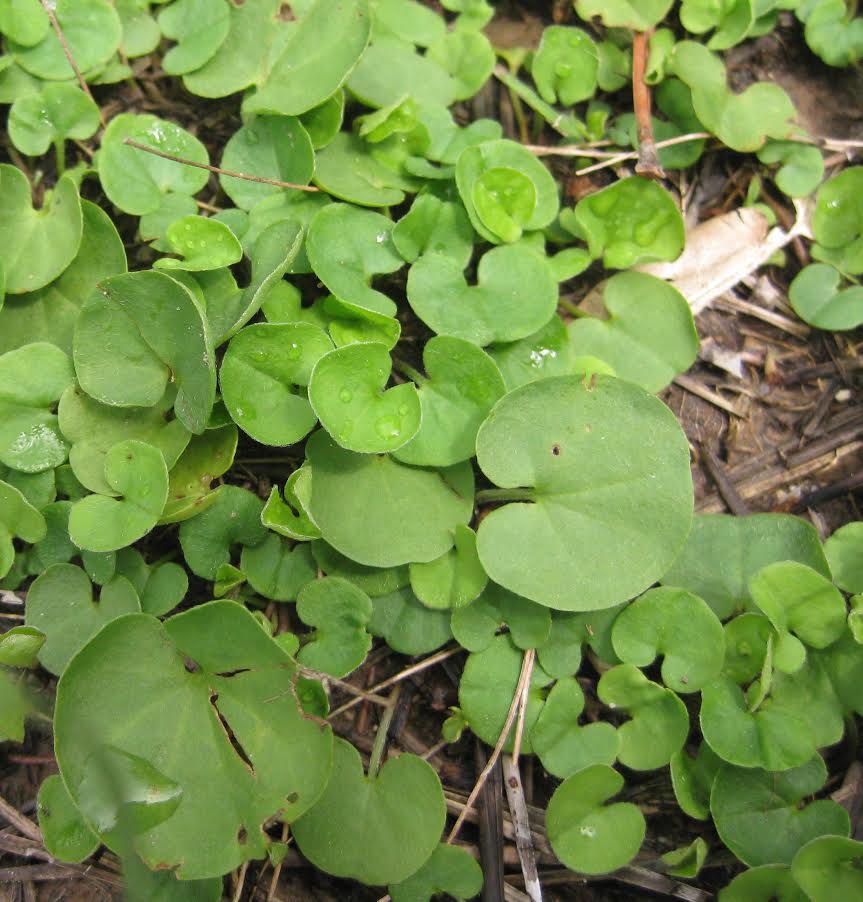
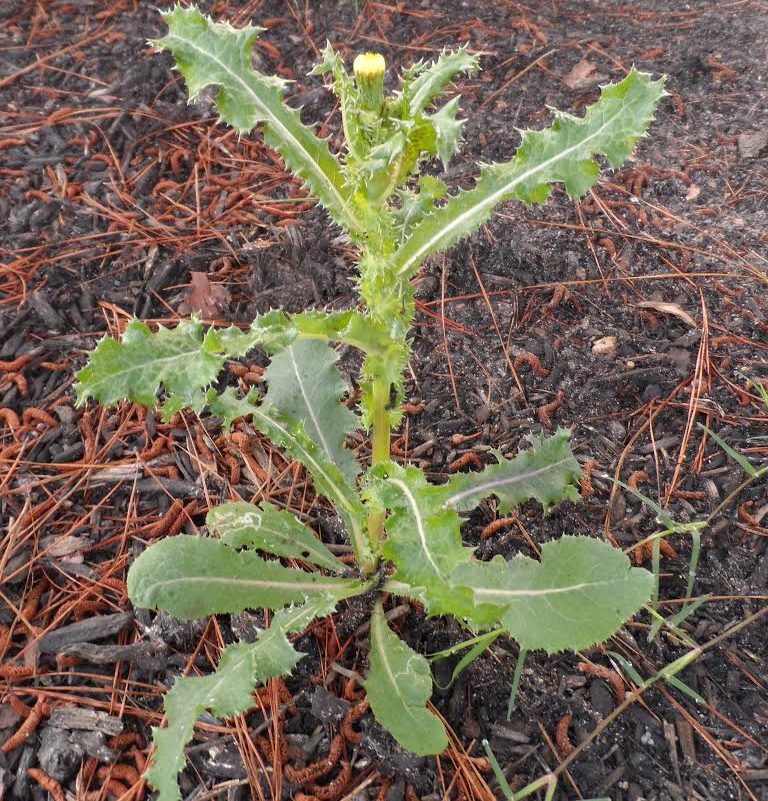
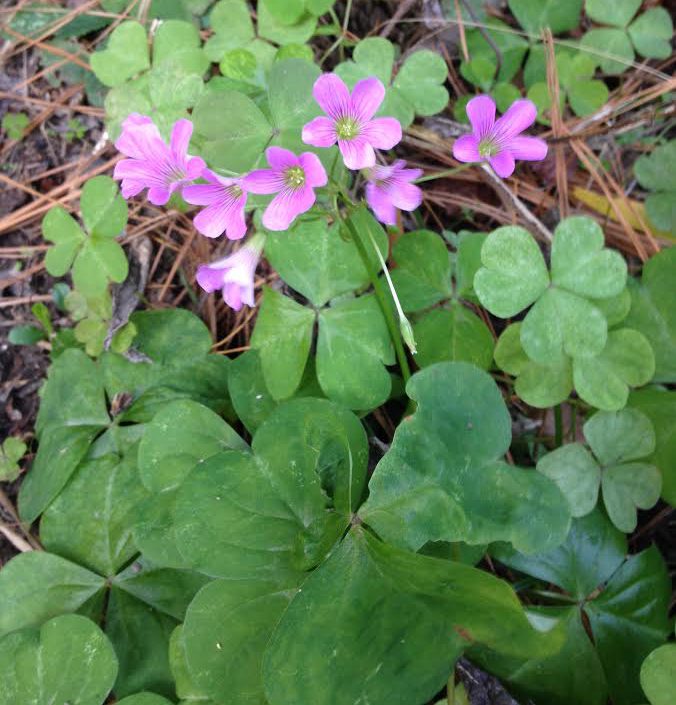
Dollarweed, pony’s foot, dandelions, cat’s ear, sow thistle, chickweed, wood sorrel, black nightshade…the list goes on and on. Most of these plants either have long roots that reach deep into the soil to bring up leached minerals or they cover the soil with many leaves and net-like roots to keep the soil from washing away. In every case they thrive where humans have churned and wrecked the soil. There will be many places fitting that description after the fall of technology.
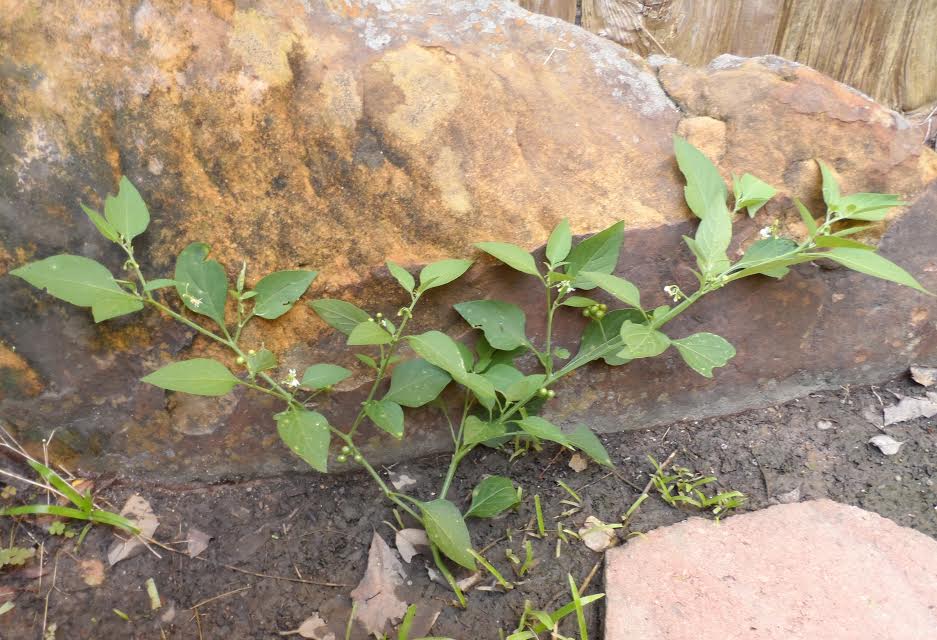
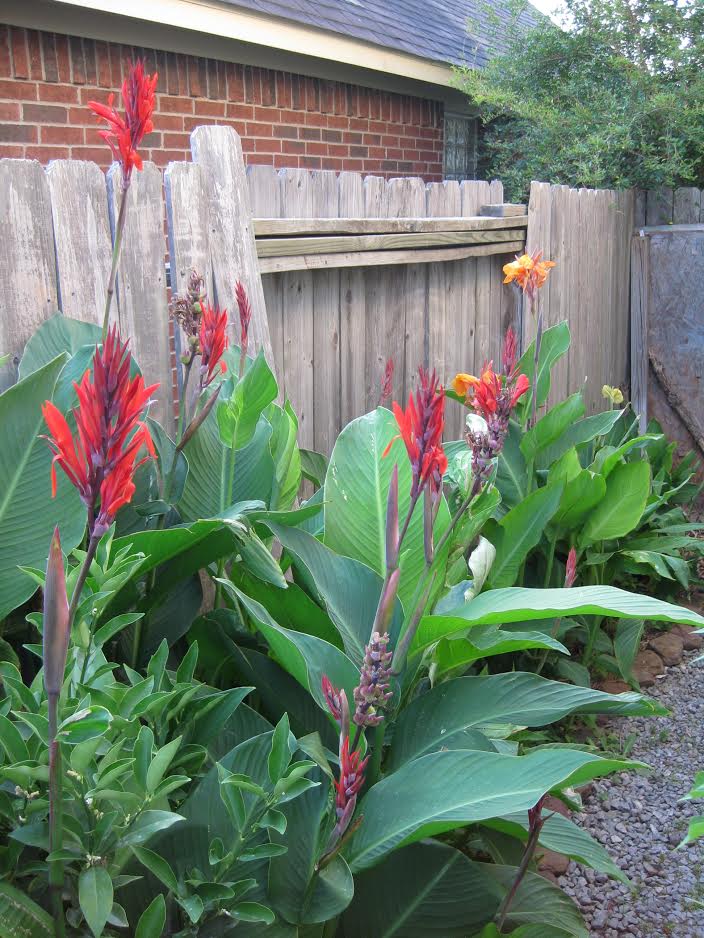
Rule 2. Calories are hard to get.
Humans have become spoiled in regard to calories. Today, an hour’s work at the lowest hourly wage in most western countries is still more than enough to buy 2,000 calories of junk. This is astounding when compared to the huge amount of labor needed for a day’s calories in the past…and in the future wastelands.

There are three wild plant sources of calories…tubers, seeds, and nuts. Each of these carries the reproductive “embryo” of a plant along with the calories to grow this embryo until its photosynthesis system begins functioning. Since all of these are an integral part of the plant’s lifecycle, it should not be surprising that they are bound to a specific season, creating small harvest windows.
Tubers are usually roasted or otherwise cooked, which breaks down their starches into sugars that taste good and are easy to digest. Groundnut (Apios americana), canna lilies (Canna indica), and gayfeathers (Liatris spp.) are some of the best tubers in regard to quantity and flavor. Groundnuts in particular can be used as a direct replacement for potatoes while the others are best pounded into flour. Look for the vines of edible groundnuts and tubers along wooded riverbanks.

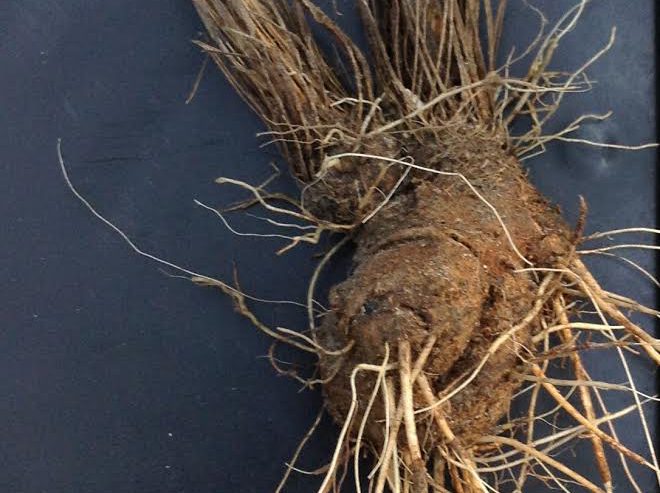
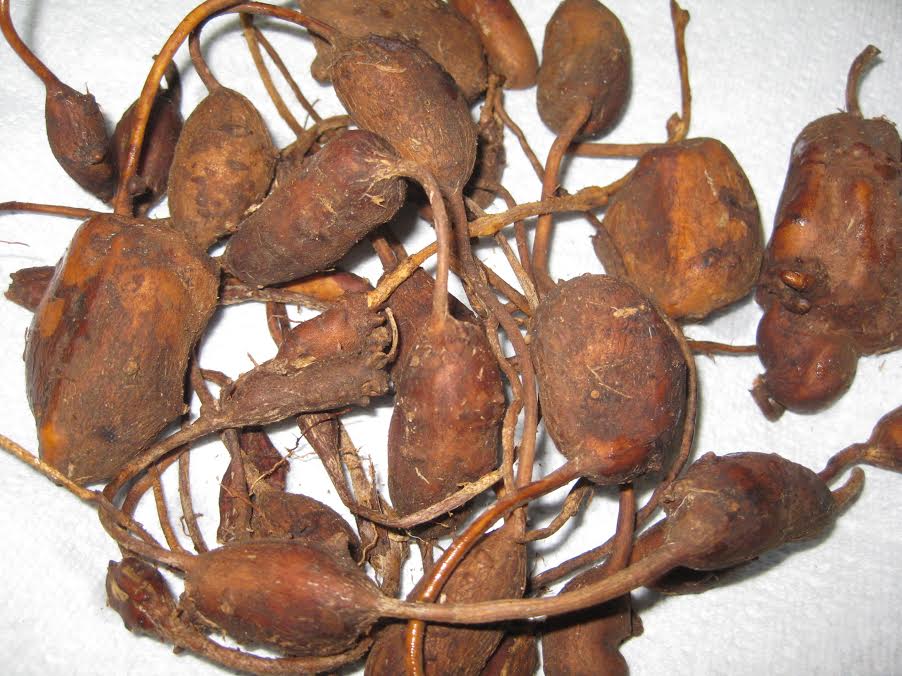
Acorns, walnuts, pecans, and hickory nuts are plentiful in most places one finds trees. Nuts provide starch calories but also oils and protein necessary for human life. Acorns and humans, in particular, go way back in the history of food. Nowadays their unique nutty flavor is neglected mainly because the trick of preparing them has been forgotten. Acorns contain a high level of bitter-tasting tannic acid that will cause a stomach ache. Luckily, tannic acid is easily removed by running water over crushed acorn meal. Soaking or boiling the acorns won’t work, it needs to be running water such as in a stream or rain gutter. Once the flush water is no longer bitter (anywhere from 5 minutes to several hours), the acorns are ready for use.
Roasting acorns improves their otherwise bland flavor. Then the leached nutmeats can be boiled into porridge or ground into gluten-free flour. This flour makes excellent pancakes or other batter-based breads, breading for fried foods, or as a thickening agent for gravy.

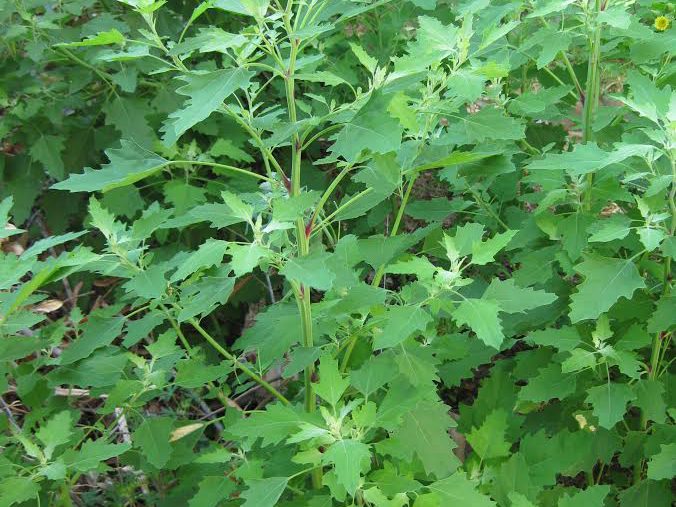
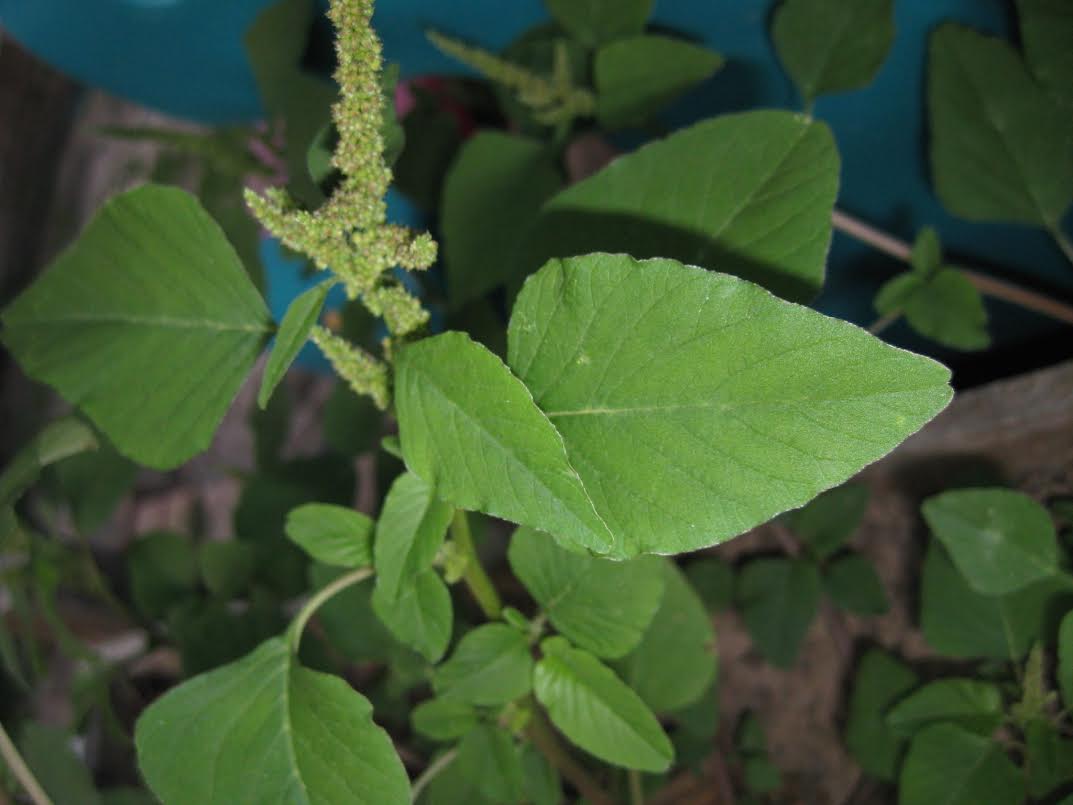
Seeds such as those from lamb’s quarter (Chenopodium album), amaranths (Amaranthus spp.), and curled dock (Rumex crispus) can be prepared like acorns without the extra labor of tannin extraction. Curled dock produces thousands of tasty, easy-to-harvest seeds, but these seeds must be freed from their thin bran shell before eating. Strip the mature, reddish-brown seeds from the stalk, then toast them a bit in a large wok. This makes their shells brittle and easily removed by grinding between the heels of your palms. Winnow the results in a light breeze to blow the shell chaff from the seeds. The curled dock seeds are now ready for use as is or ground into flour.

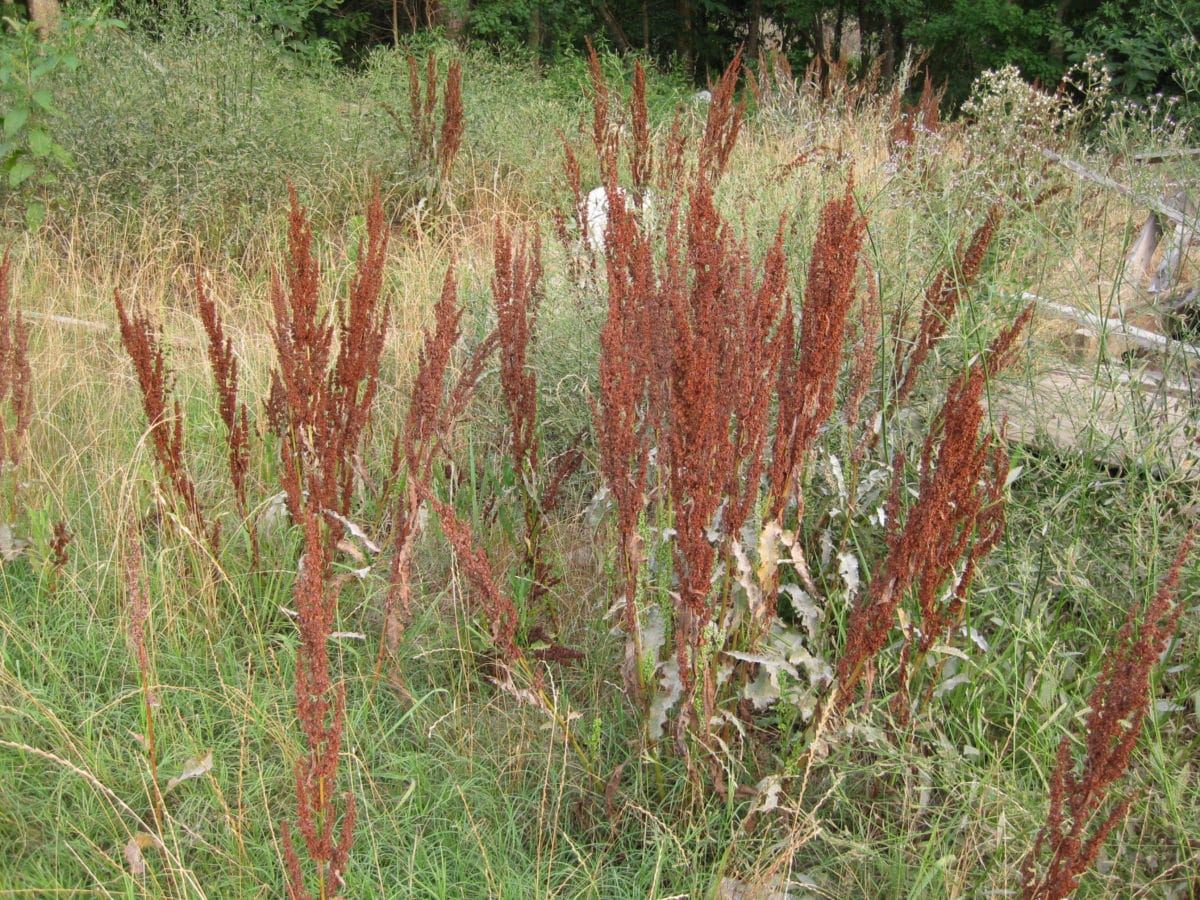
Rule 3. Balance the bitter.
While some edible wild plants do have fantastic flavors, most of the leafy, green ones run from bland to somewhat bitter. Luckily, this bitterness is easily balanced in four different ways, each of which gives very different results. The easiest way, when the apocalypse has greatly limited your choice of ingredients, is to simply boil the greens then toss the water. Unfortunately this also removes a lot of the water-soluble nutrients that you’ll probably want as well as leaving you with a soggy, green mass.
The second method is to dilute the bitterness among more bland greens. Mild flavored wild violets (Viola spp.), dollarweed (Hydrocotyle spp.), chickweed (Stellaria media), and pony’s foot (Dichondra carolinensis) are particularly good for this method. Finely chopped bitters such as dandelions (Taraxacum officinale) and cat’s ear (Hypochaeris radicata) can give just the right kick to an otherwise bland salad after the end of the world.

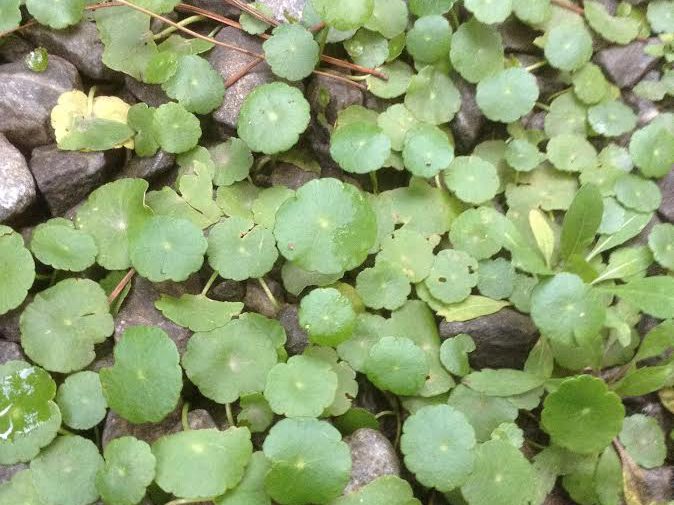

The third method requires allowing some wine or apple cider to oxidize to vinegar. The tongue has a hard time tasting bitter and sour at the same time, causing both flavors to be reduced in power. A dash of vinaigrette dressing will allow you to increase the percentage of bitter greens in your salad. Another use of vinegar is to pickle the unopened flower buds of the ubiquitous weed sow thistle (Sonchus oleraceus), resulting in a pickled caper-like condiment.
The final way of balancing bitter involves wilting the greens with a hot fat such as bacon grease. Considering the large population, durability, and ecological damage caused by feral hogs before TEOTWAWKI, it is very likely these beasts will continue to ravage the wilds after Armageddon. If bacon grease isn’t available (though frankly, I don’t wish to live in such a world), other animal fats or even oils pressed from acorns or wild sunflower seeds can be used.

Rule 4. Think flavors and textures rather than specific recipes.
These are basic guidelines for using just the tiniest fraction of available, edible wild plants. Each of you has your own preferences, not to mention cooking skills far surpassing those of this humble author. Trust your instincts when it comes to substituting wild plants for current domesticated varieties. Spend an afternoon with a local foraging expert touching, tasting, and playing with possible ingredients. You’ll be shocked by the food everywhere, and when Armageddon strikes you’ll still enjoy fine dining in the apocalypse. ![]()
